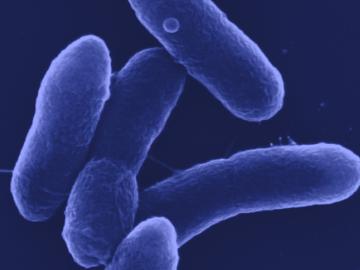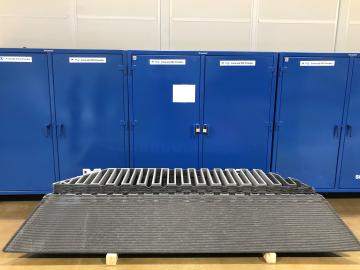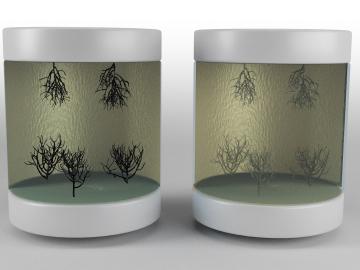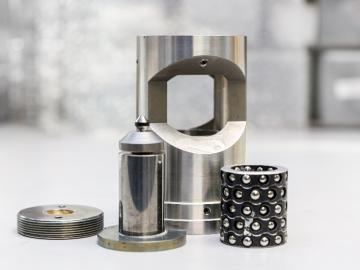
Filter News
Area of Research
- Advanced Manufacturing (4)
- Biological Systems (1)
- Biology and Environment (18)
- Computer Science (1)
- Electricity and Smart Grid (1)
- Energy Science (47)
- Energy Sciences (1)
- Functional Materials for Energy (2)
- Fusion and Fission (3)
- Fusion Energy (1)
- Isotopes (1)
- Materials (34)
- Materials for Computing (3)
- National Security (5)
- Neutron Science (32)
- Nuclear Science and Technology (3)
- Quantum information Science (1)
- Supercomputing (9)
News Type
News Topics
- (-) Bioenergy (26)
- (-) Composites (16)
- (-) Energy Storage (50)
- (-) Frontier (10)
- (-) Mercury (3)
- (-) Neutron Science (42)
- (-) Physics (11)
- 3-D Printing/Advanced Manufacturing (57)
- Advanced Reactors (18)
- Artificial Intelligence (33)
- Big Data (26)
- Biology (31)
- Biomedical (18)
- Biotechnology (6)
- Buildings (31)
- Chemical Sciences (31)
- Clean Water (14)
- Computer Science (70)
- Coronavirus (15)
- Critical Materials (13)
- Cybersecurity (9)
- Emergency (2)
- Environment (67)
- Exascale Computing (11)
- Fossil Energy (1)
- Fusion (19)
- Grid (28)
- High-Performance Computing (33)
- Hydropower (6)
- Irradiation (3)
- Isotopes (15)
- ITER (5)
- Machine Learning (19)
- Materials (70)
- Materials Science (54)
- Mathematics (3)
- Microscopy (21)
- Molten Salt (6)
- Nanotechnology (25)
- National Security (13)
- Nuclear Energy (36)
- Partnerships (11)
- Polymers (15)
- Quantum Computing (9)
- Quantum Science (18)
- Security (4)
- Simulation (16)
- Software (1)
- Space Exploration (11)
- Statistics (1)
- Summit (11)
- Transportation (52)
Media Contacts

The Department of Energy’s Office of Science has selected five Oak Ridge National Laboratory scientists for Early Career Research Program awards.

A research team led by Oak Ridge National Laboratory bioengineered a microbe to efficiently turn waste into itaconic acid, an industrial chemical used in plastics and paints.

Oak Ridge National Laboratory researchers, in collaboration with Cincinnati Inc., demonstrated the potential for using multimaterials and recycled composites in large-scale applications by 3D printing a mold that replicated a single facet of a

Scientists at Oak Ridge National Laboratory have devised a method to identify the unique chemical makeup of every lithium-ion battery around the world, information that could accelerate recycling, recover critical materials and resolve a growing waste stream.

Scientists at Oak Ridge National Laboratory successfully demonstrated a technique to heal dendrites that formed in a solid electrolyte, resolving an issue that can hamper the performance of high energy-density, solid-state batteries.

Oak Ridge National Laboratory researchers combined additive manufacturing with conventional compression molding to produce high-performance thermoplastic composites reinforced with short carbon fibers.

Researchers at Oak Ridge National Laboratory’s Spallation Neutron Source have developed a diamond anvil pressure cell that will enable high-pressure science currently not possible at any other neutron source in the world.

Three technologies developed by ORNL researchers have won National Technology Transfer Awards from the Federal Laboratory Consortium. One of the awards went to a team that adapted melt-blowing capabilities at DOE’s Carbon Fiber Technology Facility to enable the production of filter material for N95 masks in the fight against COVID-19.

A new Department of Energy report produced by Oak Ridge National Laboratory details national and international trends in hydropower, including the role waterpower plays in enhancing the flexibility and resilience of the power grid.

Six scientists at the Department of Energy’s Oak Ridge National Laboratory were named Battelle Distinguished Inventors, in recognition of obtaining 14 or more patents during their careers at the lab.


